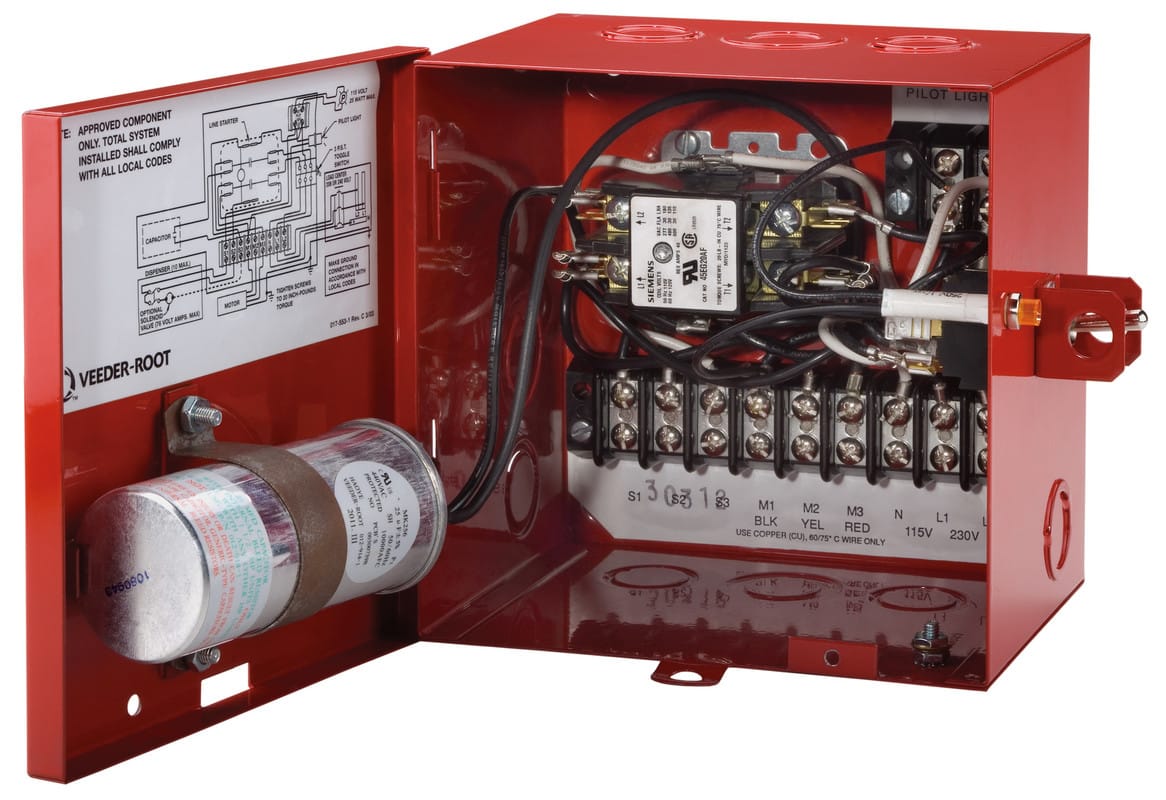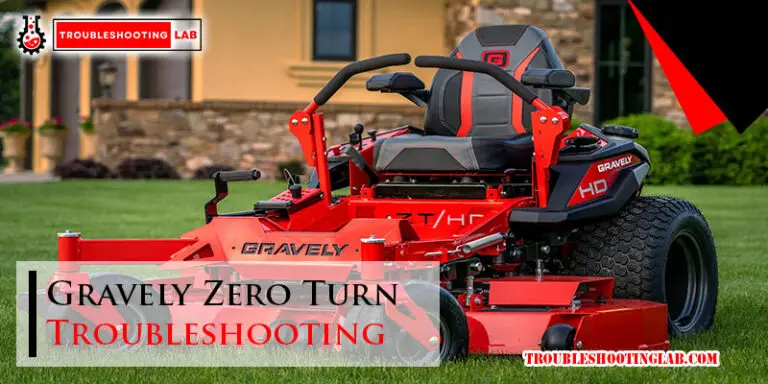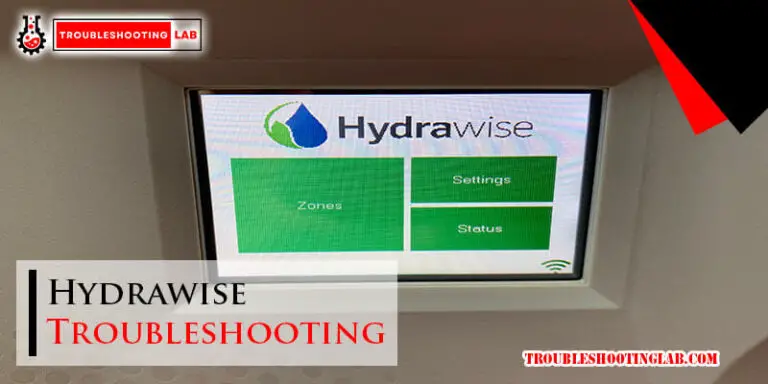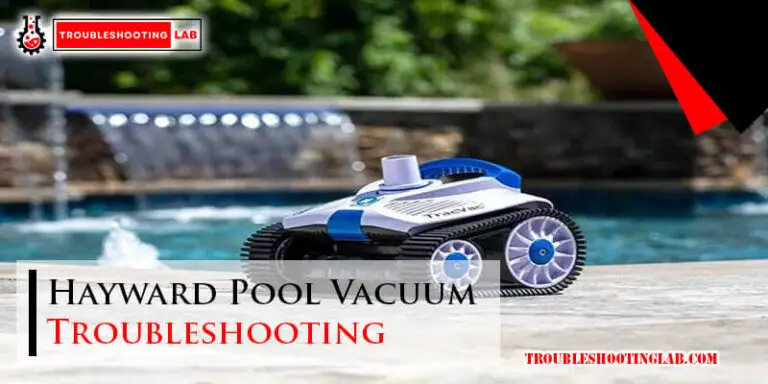Well Pump Control Box Troubleshooting: Expert Solutions
Are you dealing with issues in your well pump control box? You’re not alone.
Many homeowners face challenges with their well systems, and understanding how to troubleshoot can save you time, money, and frustration. If your water pressure is low or your pump isn’t working at all, your control box might be to blame.
But don’t worry—tackling this problem doesn’t have to be overwhelming. By the end of this article, you’ll have a clear grasp of how to identify and fix common problems associated with your well pump control box. Ready to get your water flowing smoothly again? Let’s dive into the practical solutions that will put you back in control.

Credit: m.youtube.com
Signs Of A Faulty Control Box
Identifying the signs of a faulty well pump control box can save you time, money, and hassle. A malfunctioning control box can lead to inefficient water supply and potential system damage. Being aware of these signs can help you take quick action before the situation worsens.
Unusual Noises
Have you ever noticed strange sounds coming from your well pump? Unusual noises like humming or clicking can be a strong indicator of a faulty control box. It might be trying to tell you that something isn’t right.
These sounds can sometimes be loud enough to catch your attention from inside your home. If you hear them, it’s time to inspect the control box. Ignoring these noises could lead to more significant issues down the line.
Frequent Cycling
Does your pump seem to turn on and off more than usual? Frequent cycling can suggest a problem with the control box. It’s not just annoying; it can wear out your pump faster.
Consider how often you hear the pump start and stop. If it seems excessive, the control box might need troubleshooting. Addressing it promptly can extend the life of your pump.
Inconsistent Water Pressure
Inconsistent water pressure is another sign that your control box might be faulty. One moment you might enjoy a powerful shower, and the next, the water just trickles.
This inconsistency can be frustrating, especially if you’re in the middle of washing dishes or taking a shower. Pay attention to these fluctuations. They might be telling you it’s time to check the control box.
Have you experienced any of these issues? Staying alert to these signs can help maintain your well pump’s efficiency. Regular maintenance and quick responses to these signs can keep everything flowing smoothly. Always remember, a little attention now can prevent bigger problems later.

Credit: forums.mikeholt.com
Basic Tools For Troubleshooting
Understanding the basic tools for troubleshooting a well pump control box is crucial. These tools help diagnose issues efficiently, ensuring your pump runs smoothly. They are essential for anyone aiming to maintain their well pump system. Here’s a guide to the key tools required for effective troubleshooting.
Multimeter
A multimeter measures voltage, current, and resistance. It helps identify electrical problems in the control box. To use it, set the multimeter to the correct function. Check the wiring and components for continuity. This tool is invaluable for finding faults and ensuring electrical safety.
Screwdriver Set
A screwdriver set is needed to open the control box and access its components. Different screwdrivers fit various screw types and sizes. Ensure you have both flathead and Phillips screwdrivers. They help in tightening loose connections or removing faulty parts. A reliable screwdriver set simplifies the task significantly.
Voltage Tester
A voltage tester checks if power is reaching the control box. It ensures that there is no live current present during repairs. Hold the tester near wires or terminals to detect voltage presence. This tool protects you from electrical hazards while troubleshooting. It’s vital for confirming power supply issues.
Safety Precautions
Ensure the power is off before inspecting a well pump control box. Wear safety gloves to prevent electrical shocks. Always use insulated tools when troubleshooting to avoid accidents.
When troubleshooting a well pump control box, safety is your top priority. Before diving into the problem-solving process, ensure you understand the necessary precautions to protect yourself from potential hazards. Taking the right steps can prevent accidents and help you focus on the task with peace of mind.Power Disconnection
The first safety measure is disconnecting the power. Always turn off the power supply before you start working on the control box. This simple step can prevent electric shock or damage to the equipment. It’s like flipping a switch to pause danger. Double-check that the power is off by using a voltage tester. This tool will confirm that the electricity is indeed disconnected. Have you ever accidentally left a device plugged in? It’s easy to forget, but with a voltage tester, you can be sure.Protective Gear
Wearing protective gear is crucial. Equip yourself with gloves and safety goggles to shield against any electrical mishaps. Gloves will protect your hands from sharp edges and electrical currents. Safety goggles prevent debris from entering your eyes. It’s not just for looks; it’s about keeping yourself safe from unexpected situations. Imagine working without gloves and suddenly feeling a sharp edge—unpleasant, right? Gear up to avoid those surprises.Working In Dry Conditions
Always ensure you work in dry conditions. Water and electricity don’t mix well. Wet surroundings can lead to electrical hazards and equipment damage. Make sure the area is dry before you start. If there’s moisture, wipe it away or wait until conditions improve. Think about how a wet surface can be slippery, leading to accidents. Your workspace should be safe and dry to focus on troubleshooting without worry. Are you confident in your environment? If not, take a moment to ensure safety. By following these safety precautions, you can work effectively on your well pump control box with confidence and reduce risks. Remember, a safe approach leads to a successful outcome.Inspecting The Control Box
Inspecting the control box is essential in well pump troubleshooting. Check for loose connections or burned wires inside. Ensure all components are functioning properly to avoid pump failure.
Inspecting the control box of a well pump is crucial. It ensures efficient operation and prevents costly repairs. A well-functioning control box keeps your water system reliable. Start by examining the control box for any visible issues. This step can save time and money. Below are the key areas to focus on during inspection.Visual Inspection
Begin with a thorough visual check of the control box. Look for signs of damage or corrosion. Ensure the box is free from dirt and moisture. These elements can cause electrical issues. Pay attention to any unusual smells or burnt marks. These may indicate overheating or electrical faults.Checking Connections
Secure connections are vital for the control box’s performance. Loose or corroded wires can disrupt the system. Inspect all wire connections for tightness and cleanliness. Ensure that all screws and connectors are intact. Replace any damaged parts immediately. This prevents potential failures in the system.Assessing Component Wear
Components in the control box can wear out over time. Check for worn-out relays, capacitors, or breakers. Listen for unusual sounds from these components. Replace any parts that show signs of wear. Regular maintenance extends the life of your control box. It also ensures optimal performance of your well pump.Testing Electrical Components
Troubleshooting well pump control boxes involves checking electrical connections and testing components for faults. A multimeter helps identify issues in capacitors and relays. Addressing these problems ensures efficient water supply and prevents further damage.
Testing electrical components in a well pump control box is crucial for ensuring your water system runs smoothly. If you’ve ever turned on your tap only to find a trickle of water, you know how frustrating it can be. Electrical issues in the control box might be the culprit, and understanding how to test these components can save you time and money. Whether you’re handy with tools or just starting, these tips will guide you through a straightforward troubleshooting process. Let’s dive into some specific components you should check.Capacitor Functionality
Start with the capacitor, a vital component in your well pump control box. It stores electrical energy, giving the pump the power boost it needs to start. If your pump is struggling to start, the capacitor might be faulty. To test its functionality, disconnect the power supply. Use a multimeter set to the capacitance mode. Check the readings against the manufacturer’s specifications. If they’re off, consider replacing the capacitor. Have you ever noticed your pump takes longer to start? A faulty capacitor could be the reason.Relay Testing
Next, focus on relay testing. The relay acts as a switch, controlling the power flow to the pump. If the relay malfunctions, your pump may not operate correctly. You can test the relay by listening for a clicking sound when the pump turns on. A lack of sound might indicate a problem. Use a multimeter to check for continuity. If there’s no continuity, the relay could be faulty. Have you experienced intermittent pump operation? A malfunctioning relay might be the cause.Checking Overload Protectors
Overload protectors safeguard your pump from electrical damage by cutting off power if the system overheats. If your pump stops working unexpectedly, the overload protector could have tripped. Examine the overload protector for any visible damage or signs of wear. Reset it by pressing the reset button, if available. Test it with a multimeter to ensure it’s functioning correctly. Did your pump shut off during heavy usage? It might be the overload protector stepping in to prevent damage. By understanding these key components, you’re better equipped to tackle basic troubleshooting. Electrical components in a well pump control box can seem intimidating, but with the right tools and a bit of patience, you can identify and fix issues effectively. Have you ever successfully fixed an electrical issue yourself? How did it feel to solve the problem? Share your experience in the comments!Common Issues And Fixes
Dealing with well pump control box issues can be frustrating. Many homeowners face common problems that are easy to fix. Understanding these issues can help keep your pump running smoothly. Let’s explore some typical problems and their solutions.
Burnt Capacitors
Burnt capacitors can stop the pump from working. They store energy for the motor. If they fail, the motor won’t start. To fix this, replace the damaged capacitor. Check the voltage and size before buying a new one. This ensures compatibility with your system.
Faulty Relays
Faulty relays often cause intermittent pump operations. Relays control the flow of electricity. A broken relay can prevent power from reaching the pump. Replacing the relay usually solves the problem. Make sure the replacement matches the original specifications.
Wire Corrosion
Wire corrosion disrupts the electrical flow. Moisture and dirt can corrode wires over time. Inspect the wires for any signs of damage. Clean and replace corroded wires promptly. This helps maintain a strong electrical connection.
When To Call A Professional
Dealing with a well pump control box can be tricky. Sometimes, you might feel out of your depth. Knowing when to call a professional can save time and prevent further issues. Here, we explore specific scenarios where expert help is a must.
Complex Electrical Problems
Electrical issues can be dangerous. If you notice burnt wires or smell something burning, it’s time to call a pro. Tinkering with complex electrical systems without expertise risks safety. Professionals know how to handle these situations safely.
Persistent Issues
Some problems just won’t go away. If you’ve fixed the same issue repeatedly, it’s a sign of a deeper problem. A professional can diagnose underlying issues. They can provide a long-term solution, ensuring your pump works smoothly.
Lack Of Necessary Tools
Well pump repairs often require special tools. Without these, fixing issues can be impossible. Professionals have the right equipment. They ensure repairs are done efficiently and correctly.

Credit: www.veeder.com
Preventive Maintenance Tips
Maintaining a well pump control box ensures its long life and efficiency. Regular care prevents unexpected failures and costly repairs. Here, we discuss key preventive maintenance tips. These tips keep your well pump control box in top condition.
Regular Inspections
Check your control box every three months. Look for loose wires or burned-out components. Listening for unusual noises can also reveal hidden issues. These inspections help spot problems before they become serious.
Scheduled Replacements
Replace worn-out parts on a regular basis. Capacitors and switches wear out over time. Creating a replacement schedule minimizes breakdowns. Keep a log of replacements for easy tracking.
Environment Considerations
Place your control box in a dry, clean area. Moisture and dust can damage electronic parts. Use protective covers to shield against the elements. Maintain a stable temperature to avoid overheating.
Frequently Asked Questions
How Do I Test A Well Pump Control Box?
Check for power supply issues first. Inspect wires and connections. Use a multimeter to test voltage levels.
Why Is My Well Pump Control Box Clicking?
Clicking usually indicates relay issues. Check if the relay is worn out or malfunctioning. Replace if necessary.
Can A Faulty Control Box Affect Water Pressure?
Yes, a faulty control box can reduce water pressure. It may cause irregular pump operation. Ensure the box functions properly.
What Causes Control Box Overheating?
Overheating often results from electrical overloads or faulty components. Check for damaged parts and ensure proper ventilation.
How Can I Reset My Well Pump Control Box?
Locate the reset button on the control box. Press it firmly to reset. Ensure power is disconnected before resetting.
Conclusion
Troubleshooting a well pump control box can seem daunting. But, with patience, it’s manageable. Start by checking power supply and connections. Listen for unusual sounds. Examine the components carefully. Replace faulty parts promptly. Regular maintenance helps prevent future issues. Always prioritize safety.
Consult a professional if unsure. You ensure your well pump operates smoothly with these steps. A well-maintained system saves time and money. Keep learning about your equipment. This knowledge empowers you for future challenges. Remember, a little effort goes a long way.
Stay informed, stay prepared. Your well pump will thank you.






